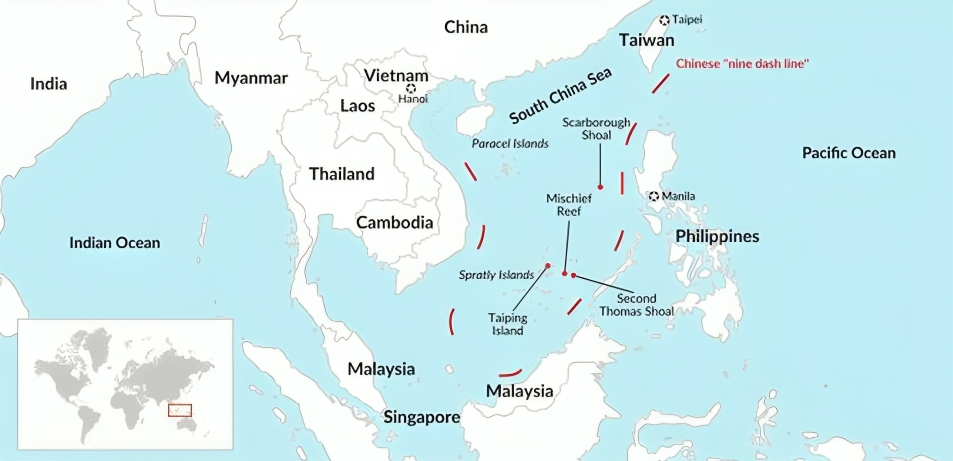Table of Contents
The Vulnerabilities of India’s Elderly
Context:
- The ageing phenomenon is notable for the significant improvement in human longevity paired with the lowest levels of reproduction.
- This trend, while potentially alarming due to its scale, is being redefined by considering not just age but related functional aspects influenced by increasing longevity and evolving vulnerabilities.
Vulnerabilities in Later Life in India
- In India, elderly individuals face four major vulnerabilities:
- Restrictions in Activities of Daily Living (ADL)
- Multi-morbidity
- Poverty
- Lack of Income
- According to the Longitudinal Ageing Survey of India (LASI, 2017-18), about 20% of the elderly population experiences each of these vulnerabilities.
- The elderly population in India is projected to reach 319 million by mid-century, growing at an annual rate of 3%.
- This population will predominantly be female, with a sex ratio of 1,065 females per 1,000 males, and 54% of elderly women will be widows.
- Additionally, 70% of the elderly will reside in rural areas, with 6% of elderly men and 9% of elderly women living alone.
Concerns Associated
Population and Familial Transition
- The ageing population should not be viewed in isolation as it coincides with familial transitions.
- Household compositions and the accommodation patterns of the elderly are changing.
- There are increasing instances of elderly individuals living with other elderly people within households.
- These living arrangements highlight the persistent vulnerabilities, as households with elderly members show more dependence and care needs, compared to those without elderly members.
Health Status
- A quarter of the elderly report poor health, compared to about 20% of those aged 45 and above.
- Chronic diseases affect 75% of the elderly, while 40% of those aged 45 and above have disabilities.
- Diabetes and cancer are frequent ailments among India’s elderly.
- Mental health issues are also a concern, with 20% of those aged 45 and above self-reporting ailments, primarily depression.
Food Insecurity
- Food insecurity affects India’s elderly, with 6% of those above 45 years of age eating smaller portions or skipping meals, and 5.3% not eating despite being hungry. This has implications for nutrition and related morbidities.
Awareness and Protection Measures
- Despite existing welfare provisions, legal recourse, and concessions for the elderly, awareness remains low.
- Only 12% are aware of the Maintenance and Welfare of Parents and Senior Citizens Act, 2007, and 28% are aware of various concessions available to them.
Abuse and Neglect
- The elderly in India face abuse, with 5% reporting such experiences.
- Abuse is particularly prevalent among women in rural areas, where they are most neglected.
Conclusion
A comprehensive approach to ageing should focus on life preparatory measures, social security, and ensuring an active life course for future elderly populations. Innovative institutional forms and greater awareness of welfare provisions can help address the vulnerabilities faced by India’s elderly.
Laws on Mercenaries in War Zone
Context
- The Ministry of External Affairs (MEA) of India acknowledged the deaths of two Indian nationals who were recruited by the Russian Army amidst the ongoing conflict between Russia and Ukraine.
- The Indian Embassy in Moscow has raised this issue with the Russian Ambassador in New Delhi and Moscow authorities, seeking the swift release and return of all Indian nationals currently serving in the Russian Army.
Understanding Mercenaries
- Definition: Mercenaries differ from conventional combatants; they are recruited from third-party states, motivated by personal gain, and not entitled to prisoner-of-war status under international humanitarian law (IHL).
- Geneva Conventions: Article 47 of Additional Protocol I (API) to the Geneva Conventions defines mercenaries based on six conditions, including recruitment for armed conflict, direct participation in hostilities, and motivation by private gain.
- Legal Standing: Being a mercenary is not a crime per se under IHL, but they are not protected by the Geneva Conventions and can be prosecuted for war crimes.
- Regional Variations: African states and the United Nations have expanded the definition to address civil wars and additional mercenary activities.
| Facts |
|
Existing Regime Limitations
- The current regulatory regime lacks a clear and comprehensive definition of mercenaries, often excluding foreign military personnel integrated into another state’s armed forces.
- Private Military and Security Companies (PMSCs), such as Russia’s Wagner Group, operate with more loosely defined legal frameworks, posing challenges for accountability.
- Signatories commit to overseeing PMSCs’ compliance with IHL, but neither India nor Russia are signatories, highlighting the need for tighter restrictions and stronger international legal frameworks.
| The Montreux Document |
|
Proposed Way Forward
- Policy Framework: India should develop a robust policy to address distress migration and combat human trafficking.
- Two-Pronged Approach: Long-term measures should address economic drivers of migration, while immediate measures should focus on public education and pre-travel vetting for Indians travelling to conflict zones.
- Pre-Travel Approval: Pre-travel approval from the MEA for travel to Russia could help identify suspicious cases of human trafficking.
- International Examples: Bangladesh’s Dhaka Principles for Migration with Dignity and Nepal’s ban on citizens travelling to Russia or Ukraine for employment serve as models for ethical recruitment and protective measures.
Second Thomas Shoal
Context: China and the Philippines traded accusations over a collision in the South China Sea near Second Thomas Shoal.
Mapping- Second Thomas Shoal
- Location: Submerged reef in the Spratly Islands, South China Sea.
- Characteristics: A low-tide elevation within the exclusive economic zone (EEZ) of the Philippines.
- Philippines’ Presence: The Philippines took possession of Second Thomas Shoal in the late 1990s, using the BRP Sierra Madre as a military outpost, manned by a small contingent of troops.

| Shoal |
| A shoal is a natural underwater ridge or sandbank that is typically visible at low tide but submerged at high tide. Shoals can pose navigational hazards but also provide habitats for marine life. |
Geographic and Political Context
- Approximately 108 nautical miles (200 km) from the Philippine island of Palawan.
- Chinese Claims: China claims most of the South China Sea, including the Second Thomas Shoal, based on the Nine-dash line, which overlaps with the EEZs of Vietnam, the Philippines, Malaysia, Brunei, and Indonesia.
- Legal Dispute: In 2013, the Philippines filed a case against China with the Permanent Court of Arbitration in The Hague, challenging China’s claims and activities in the South China Sea, including Second Thomas Shoal.
- The court ruled in favour of the Philippines in 2016, but China rejected the judgement.
Examples, Case Studies and Data
- Environment (GS-3): The Union Jal Shakti Ministry launched an Environmental Flow (e-flow) ecological monitoring system for real-time tracking of river quality, aiding project planning and monitoring.
- Developed by the National Mission for Clean Ganga ( Namami Gange, under the Ministry of Jal Shakti), it monitors the water quality of the Ganga, Yamuna, and tributaries, along with Namami Gange program activities.
- The E-flow Monitoring System marks a significant step towards ensuring the continuous and sustainable flow of the Ganga River.
- The system utilises data from Central Water Commission reports to track key parameters like in-flow, out-flow, and mandated E-flow across 11 projects along the Ganga Mainstream.


 UDAN Scheme, Objectives, Funding and Ach...
UDAN Scheme, Objectives, Funding and Ach...
 Indus Water Treaty 1960 Suspended by Ind...
Indus Water Treaty 1960 Suspended by Ind...
 5 Years of SVAMITVA Scheme and Its Benef...
5 Years of SVAMITVA Scheme and Its Benef...





















